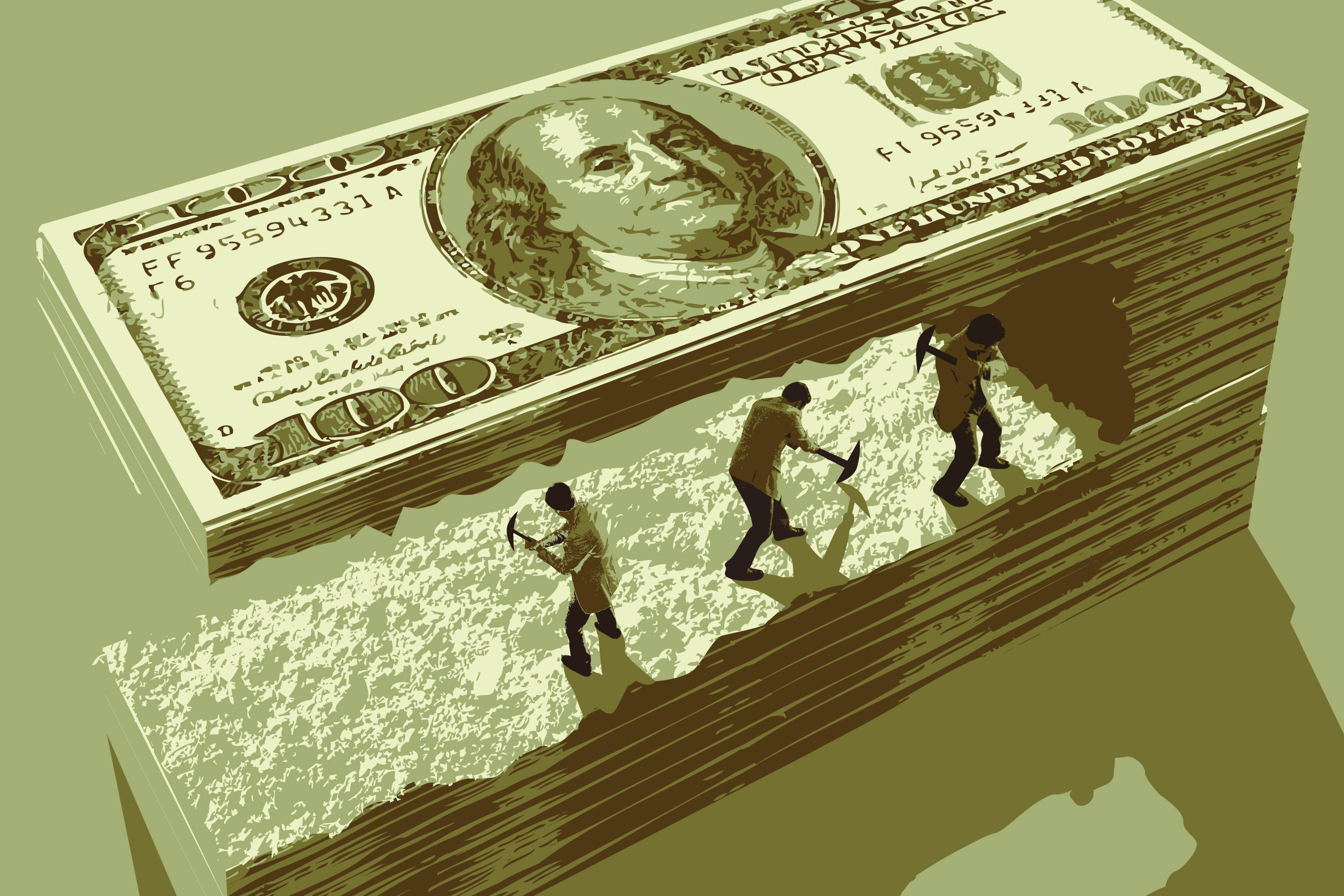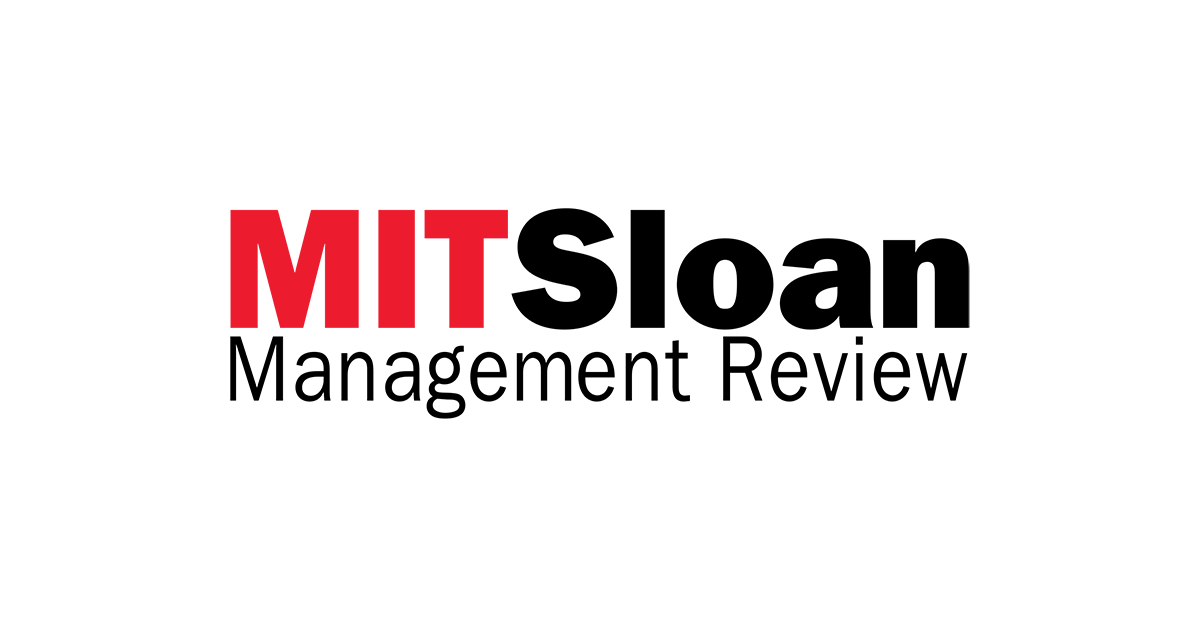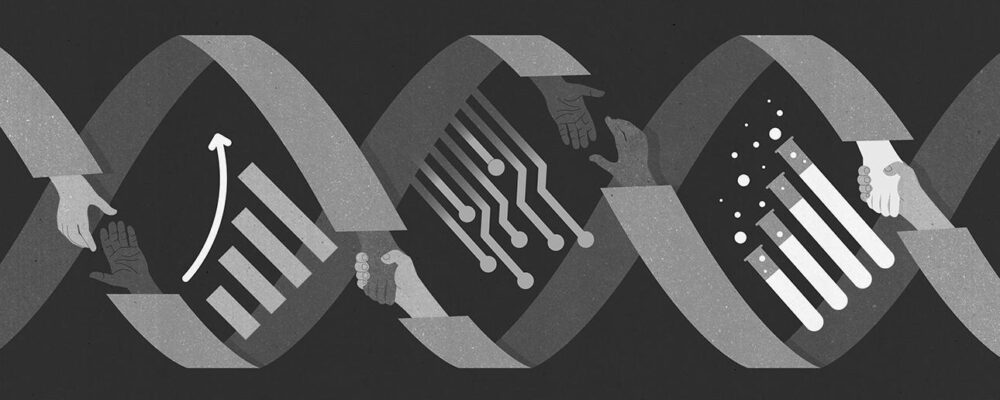
When Southwest Airlines suffered a post-holiday meltdown in December 2022, the trigger was a bout of adverse weather.
But the storm hit Southwest harder than it did most airlines. The company’s outdated computer systems collapsed, and years of underinvestment in technology, particularly staff scheduling systems, led to more than 16,700 flight cancellations over the holiday travel period. Amid the chaos, an executive’s memo demanding proof of illness for the use of any sick days indicated a lack of trust in employees. The scenario contrasts starkly with what the company was once celebrated for: the pioneering development of an alternative short-haul airline concept, an unrivalled commitment to employees, and a reliance on front-line decision-making, all of which had led to industry-best operational excellence and customer service and the highest profits in the history of the industry.
Southwest’s troubles are typical of a kind of leadership malaise we see in organizations that struggle to cope with disruptive events — such as the pandemic and its aftermath, which threw airports and airlines into operational turmoil and caused supply chains to collapse. To manage short-term appearances, these leaders and their predecessors had “cashed out” capabilities and allegiances they previously relied on to help them deal with unanticipated changes. It’s a practice that has become too common and too accepted: Values, qualities, and relationships that have been honed over many years and served as the foundation for earlier successes are exchanged for near-term monetary rewards — typically in the form of cost reductions and stock price improvements that prove to be ephemeral.
We call this style of short-term leadership performance hacking. Performance hacking is the practice of giving the appearance of effective leadership by delivering on particular metrics, without delivering real performance. It involves companies and their leaders polishing financials through the calculated manipulation of investment planning and cost-cutting measures instead of prioritizing the creation of long-term value. The usual way to hack performance is by focusing on delivering short-term financial results to maintain steady trends that are unrealistic for major companies operating in complex environments but that leaders have come to believe — perhaps rightly — that the markets expect.
What performance hacking doesn’t deliver is updated facilities and computer systems; investments in product/process research and development; the ability to master or exploit new technologies; or a loyal, capable workforce.
Performance-hacking leaders might, for example, reduce investments in key organizational capabilities, allow them to atrophy, or even outsource them — in effect, cashing out the less visible products or services that seem less urgent or less cost-effective at the moment, based on the convenient but often mistaken assumption that they can always be reacquired if needed in the future. They might skimp on employee pay and growth, which over time results in their more capable (and more expensive) employees leaving and less capable (and less costly) ones taking their place. Any subsequent external disruption then reveals how much an organization’s know-how, resilience, and commitment have been sacrificed by managers’ attempts to improve appearances.
Organizational leaders can’t hack performance by themselves, of course; boards and investors must acquiesce. They often drive this behavior by rewarding executives for meeting short-term financial targets. Indeed, major investors with no stake in the company’s long-term success and viability often instigate and drive the process, motivated by the potential for short-term earnings.
Performance hacking is not a new phenomenon. In 1980, one of us (Bob Hayes), with coauthor Bill Abernathy, identified elements of what we now call performance hacking and cautioned against the tendency of corporate leaders to focus too much attention on controls and surface appearances at the expense of the “drive trains” of their companies.1 In many ways, the problem is worse today than when they first wrote about it. Adding to the urgency of this concern is that, as we will soon see, such practices appear to be spreading.
What is it that distinguishes performance hacking from strategically sound business decisions that may cut losses on bad bets or shift resources to invest in the long-term health of the business? The distinction is not always obvious to outside observers and often becomes clear only in retrospect. That said, examining recent examples where companies have clearly suffered as a result of performance hacking helps us identify warning signs that leaders are engaging in the practice.
How Performance Hacking Harms Great Companies
In the aftermath of last December’s debacle at Southwest, the pilot union published a letter that contrasted two quotations.2 The first was from Southwest’s cofounder, Herb Kelleher, who is often credited with the uniquely successful business model and culture for which the company was known in its early days: “You put your employees first. If you truly treat your employees that way, they will treat your customers well, your customers will come back, and that’s what makes your shareholders happy. So there’s no constituency at war with any other constituency. Ultimately, it’s shareholder value that you’re producing.”3
Gary Kelly, the company’s CEO from 2004 until 2022, was quoted espousing a different philosophy: “Arguably, our shareholders have suffered for a long time when it comes to getting a return and our employees have been very well taken care of.” The pilot union blamed that shift to a greater focus on shareholders for more frequent and severe operational problems.
The stated intention to take better care of shareholders is a sign that performance-hacking leadership is ascendant, but ironically the evidence suggests that these practices are actually bad for shareholders in the long run. Cashing out vital competitive capabilities might briefly benefit a subset of shareholders, but it destroys long-term value and prospects for other shareholders and stakeholders.
The corporate leader who arguably made performance hacking a mainstream management practice was Jack Welch, General Electric’s CEO from 1981-2001. By the 1990s, he had perfected ways to manage earnings per share (EPS), using tweaks and tricks to yield a smoothly rising trend that was implausibly regular, always just beating projections. The Economist called it “taking money from one pocket and putting it in another.”4 After Welch’s retirement, GE paid $50 million to settle allegations of accounting fraud by the U.S. Securities and Exchange Commission.5
Today, many commentators trace GE’s subsequent collapse — its stock plunge in the late 2010s, its removal from the Dow Jones Industrial Average after years of being named America’s Most Admired Company by Fortune magazine, and its breakup into three smaller companies — to Welch’s focus on appearance management and what insiders called the “success theater” of his successor, Jeffrey Immelt. But these practices had wider implications: GE’s ability to deliver such unwaveringly positive results, however unrealistic this was for a complex conglomerate, led investors to expect it from other companies as well. Today’s CEOs still feel this pressure.
Boeing’s safety troubles with the 737 Max airliner, two of which suffered fatal crashes that killed a total of 346 people, can also be traced back to a deliberate decision to supposedly prioritize shareholder interests.
From 1998 to 2000, Boeing’s leaders, many of them former Welch-era GE executives who came on board through Boeing’s 1997 merger with McDonnell Douglas, became fixated on polishing a financial ratio called return on net assets (RONA). To accomplish this, they expanded outsourcing, slashed R&D investment, and laid off almost 20% of the workforce. The new philosophy at Boeing called for avoiding what leadership described as “moonshot” investments — a focus on developing the kinds of major new platforms and technologies that had made Boeing the unrivaled industry leader over the previous 80 years but involved placing big bets with uncertain outcomes. The decision in 2010 to squeeze more value out of the 50-year-old 737 airframe instead of building an all-new airplane was a direct result of this new way of thinking. But putting new, larger engines on the old airframe and positioning them differently than in the past required additional software to compensate for changes in handling, which contributed significantly to the Max’s crashes.
Despite the misalignment we see in hindsight between performance hacking and protecting shareholder value, there are indicators that performance-hacking habits are spreading. Lately, large tech companies seem to be falling over one another to lay off employees, something they have historically not done at the current scale. Meta has cut 25% of its workforce over the last year. Salesforce has cut 10%; Amazon, 8%; and Alphabet, 6%, among others.6 These are highly profitable companies with favorable opportunities for further growth in their futures.
These layoffs could be warranted, as company announcements have explained, by a need to adjust the workforce to evolving competitive challenges, or to correct for having possibly overhired during the pandemic.
But they could also be gestures aimed at short-term investors. Amid Alphabet’s layoffs, a major hedge fund investor publicly demanded more, seeking a 20% workforce reduction and the shutdown of some advanced R&D projects.7 Layoffs have indeed been accompanied by such project cancellations, including some from the company’s famed X division specifically commissioned to work on moonshots.8
In recent years, tech companies have also embraced another favorite tool of performance hackers, with rising enthusiasm: the stock buyback. It’s a great tool for generating misleading EPS trends; for example, by operating on the denominator of the EPS ratio, stock buybacks enable the interesting trick of increasing EPS while earnings decrease. Such tactics have historically been employed by companies in mature markets whose leaders may be tempted to mislead because they have trouble generating growth. Tech companies, in contrast, appear to have ample growth prospects. Nevertheless, in 2021 and 2022, Alphabet, Apple, Meta, and Microsoft collectively announced almost $300 billion in stock buybacks.
Performance Hacking Indicators
Discouraging performance hacking begins with recognizing when it’s happening. Signs are often apparent to insiders: As early as 2016, Southwest pilots called for Kelly’s resignation after a computer system failure, citing his “misguided emphasis on cost controls” and spending cash on stock buybacks rather than investing in technology improvements.9 Because any individual decision can have a legitimate business rationale, detecting the practice is less about spotting a smoking gun than watching for an accumulation of decisions and actions that add up to a likelihood that leaders have succumbed to temptation. Here are some of the indicators.
Sudden, unexplained improvements in performance ratios or key results, or trends that seem unrealistically smooth. The EPS trends at GE were too smooth. The improvements in RONA at Boeing from 1998 to 2000 happened too fast to signal real operational change in such a large company. We know now what was really being signaled: excellence being cashed out. Sound management requires investing in creating new capabilities — building excellence — which often worsens performance metrics, at least initially. Numbers and trends that only improve should therefore elicit suspicion, not celebration.
A degraded customer experience. Whether it’s flight cancellations, reduced customer support, or lower-quality products, an overt shift toward maximizing shareholder value in the short term might involve “borrowing” that value from customers.
Sudden enthusiasm for outsourcing, or a shift to more transactional people management that downplays the importance of employee expertise. Scholars Gary Pisano and Willy Shih have convincingly argued that outsourcing production based on narrow financial criteria usually also outsources expertise critical to a company’s capacity to innovate.10 Leaders engaged in performance hacking often see employee contributions to a company’s products and services as just another fungible resource, interchangeable with what can be easily obtained externally. They dismiss the notion that employees are reservoirs of unique competitive know-how who have been and can be invested in and developed over many years.
Decreased leadership emphasis on the operational characteristics of the business, and fewer leaders with industry expertise. While Southwest founder Kelleher was known for his hands-on involvement in operations, Kelly rose to a leadership position on the strength of his contributions as CFO. During his tenure, he appointed an executive with an accounting background as COO. Late-1990s leaders at Boeing urged employees to avoid getting “overly focused on the box” (the airplane) and to instead conceive of the company as a generic return-making business.11 This type of perspective also tends to play down the importance of leaders’ industry-specific expertise. Past research on short-termism has implicated the hiring of leaders with little domain expertise.12 Under Kelly, Southwest board members’ airline expertise decreased noticeably. Industry expertise on the board at Boeing also declined after its late-’90s transformation.
Abandoning “moonshot” development projects. Developing new competitive capabilities sometimes requires a company to place big bets. Risk inevitably accompanies such investments. And yet it is hard to imagine a company thriving in the long run if it doesn’t do some of this — and, in industries where competition is very innovation-based, quite a lot of it. Past research on companies afflicted by short-termism points to tendencies to decentralize R&D and shift emphasis from “research” (which has a less obvious return) to “development” (which has a clearer sense of return).13 When Boeing, the dominant commercial airline innovator at the time, turned away from moonshots, it started down a path to the loss of its industry-leading capabilities (and the 737 Max crashes). Some analysts now doubt whether the company, lately competing with the likes of SpaceX and Blue Origin for aerospace talent, has the ability to create an entirely new plane.14 Might tech companies be edging toward a similar path?
The Role of the Board
As noted earlier, boards can be complicit in performance hacking. But at companies with strong, independent governance, boards of directors have a number of tools that allow them to encourage performance that benefits companies and their investors in the long term. They might rework executive compensation packages to incentivize long-term thinking rather than rewarding short-term share price performance. They might also use frameworks, such as the Balanced Scorecard, that offer a wider set of measures intended to better account for the creation and cashing out of capabilities.
However, we don’t think this problem will be solved purely through the redesign of incentives. It’s preferable that boards stay alert to the possibility of performance hacking; orchestrate ongoing conversations about the relationship between building and maintaining vital competitive capabilities and the movement of short-term financial metrics; and insert themselves into some key decisions that are routinely left to senior management (like decisions about stock buybacks, which, unlike decisions about dividends, are not legally required to involve the board).
Of course, it’s critical — but hardly a given — that board members themselves take a long-term view, just as some shareholders themselves do. An example of this came in 2021 at ExxonMobil, when the hedge fund Engine No. 1 led a campaign to install, over management objections, three board members who explicitly embraced a philosophy of focusing on long-term value creation.15 Working with management researchers and consultants at PwC, Engine No. 1 developed a “total value framework” that used multiple data sources to evaluate long-term risks and opportunities, with a goal of making it clear to everyone how actions that might look good in the short term could drag down value over time.
The harm caused by performance hacking goes beyond companies and their employees, customers, and investors, however. If the only way for the market to correct for performance hacking is to let companies implode, the public at large can bear significant collateral damage. Measures for mitigating and containing risks might include establishing regulations like the Sarbanes-Oxley Act of 2002, ensuring accurate financial reporting, and requiring stress testing as in industries like banking.
Silicon Valley Bank’s recent implosion came just a few years after it successfully lobbied against regulatory safeguards and ultimately resulted in the government having to bail out its depositors (a significant chunk of the American startup ecosystem) to avoid wider economic damage. Leaders intent on lobbying against regulations that seem onerous should keep in mind that those regulations might play an important function in curtailing performance-hacking practices.
The Risks of Inaction
Performance hacking is so destructive because it often involves irreversible decisions. Organizations made vulnerable through excessive outsourcing may find that they don’t have the ability to bring production back in-house when they need it, for example. Companies can also progressively weaken themselves through a long series of less visible decisions. Each of them might conform to what are considered generally accepted management principles and appear to have little effect on current operations but could be weakening certain expertise or capabilities, discarding a potentially useful technology, or undermining employees’ commitment to the company’s success. When those capabilities, technologies, and commitments are needed in times of stress, managers may find that they’ve gone down a one-way street: It’s much harder to replace such invisible assets than it is to cash them out.
The pandemic, the war in Europe, the attendant disruption of global supply chains, and rising inflation and interest rates vividly illustrate the kinds of sudden stresses that business leaders have had to deal with these past three years. They also provide stark examples of the bad things that can happen to those who become addicted to polishing financial metrics at the expense of their organizations’ long-term resilience.
If a business leader like Welch could make performance hacking seem desirable, it should be possible for another high-profile leader (or a group of them) to make investing for the long term seem fashionable again. A strong CEO, backed by a highly respected board, can express their intention to invest for the long haul, even if the usual financial metrics might temporarily suffer. If that approach dissuades short-term investors, so much the better. This, of course, will not be easy. It will probably attract activist short-term shareholders and short sellers. But if an influential group of business leaders can prevail and demonstrate the success of this approach, other companies might follow.
One thing is certain: If this problem is left unfixed and continues to fester and hobble companies, we should resign ourselves to watching a parade of executives retire with lavish compensation packages, leaving behind hollowed-out businesses that are incapable of providing the products, services, and desirable jobs that are desperately needed.
“The MIT Sloan Management Review is a research-based magazine and digital platform for business executives published at the MIT Sloan School of Management.”
Please visit the firm link to site






